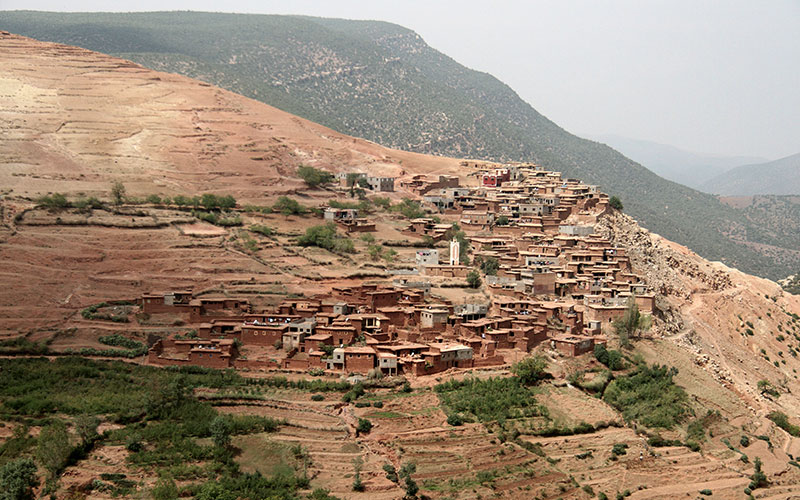Capturing Morocco’s Heart: Diving into Berber Culture’s Richness
Within the enchanting landscapes of Morocco lies a cultural tapestry woven with threads of resilience, diversity, and heritage. At the heart of this mosaic are the Berbers, the indigenous people whose roots intertwine with the very fabric of Moroccan identity. Embarking on a journey through Morocco unveils not just picturesque landscapes but a profound exploration of the Berber legacy, shaped by millennia of history, tradition, and adaptation. In this comprehensive exploration, we delve into the multifaceted world of the Morocco Berbers, tracing their ancient origins, navigating their diverse tribes, savouring their culinary delights, admiring their artistic prowess, and, ultimately, embracing the enduring spirit of Berber culture.
Ancient Origins: Tracing the Footsteps of Morocco’s First Inhabitants

The story of the Morocco Berbers spans epochs, rooted in the annals of prehistory. Archaeological excavations reveal evidence of human habitation in Morocco dating back nearly 300,000 years, making it a cradle of civilization in North Africa. These early inhabitants, the ancestors of the Berbers, left behind traces of their existence in the form of cave paintings, tools, and burial sites, offering glimpses into their daily lives and societal structures. As the sands of time shifted, so too did the landscape of Morocco, witnessing the rise and fall of civilizations, from the Phoenicians and Romans to the Arabs and Europeans. Amidst this tapestry of conquests and cultural exchanges, the Berbers stood as guardians of their ancestral lands, preserving their language, customs, and traditions against the tide of change.
Cultural Confluences: Berber Influence Across Civilizations
The Berbers’ interaction with neighbouring civilizations shaped not only their destiny but also left an indelible mark on the cultures they encountered. From the ancient Greeks’ references to “Libyans” to the Romans’ depiction of “Numidians,” the Berbers’ influence reverberated throughout the Mediterranean basin. The advent of Islam in the 7th century brought a new chapter in Berber history, as they embraced the new faith and forged dynasties that would leave an indelible mark on North Africa and beyond. The Almoravids and Almohads, two of the most illustrious Berber dynasties, extended their influence across Spain and North Africa, shaping the course of history with their military prowess, architectural achievements, and cultural contributions.
Resilience and Identity: Preserving Berber Heritage
Despite centuries of external pressures, the Berbers remained steadfast in their commitment to preserving their identity and heritage. The term “Berber,” derived from the Greek “barbaria,” fails to capture the essence of a people who proudly identify themselves as the Amazigh, meaning “free people.” Oral traditions passed down through generations, serve as repositories of wisdom, history, and cultural practices, reflecting the resilience of a people who have weathered the storms of history. Recent efforts to revitalize the Berber language, codify its grammar, and promote cultural festivals attest to a renewed sense of pride and solidarity among the Amazigh, heralding a renaissance of Berber culture in contemporary Morocco.
Diverse Tapestry: Exploring Berber Tribes
Within the labyrinthine landscapes of Morocco, the Berbers are not a monolithic entity but a diverse tapestry of tribes, each with its distinct dialects, customs, and territories. From the rugged peaks of the Rif Mountains to the verdant valleys of the Middle Atlas and the arid expanses of the Sahara, Berber communities thrive in harmony with their natural surroundings. The Riffian Berbers, with their dialect of Tarafit, inhabit the northern reaches of Morocco, while the Zayanes of the Middle Atlas and the Shilhah of the southern Atlas each carve out their niche within the cultural mosaic of Morocco. Despite regional variations, a common thread of Berber identity binds these disparate communities, serving as a testament to the enduring legacy of a people united by history, language, and tradition.
Living Heritage: Experiencing Berber Culture
To truly immerse oneself in Berber culture is to embark on a journey of discovery, traversing the rugged terrain of Morocco and embracing the warmth of Berber hospitality. From the bustling markets of Marrakesh to the remote villages nestled in the Atlas Mountains, every step unveils a new facet of Berber life. Savouring traditional cuisine, such as the savoury Berber pizza or megafauna cooked in the sands of the Sahara, offers a taste of the culinary delights that define Berber hospitality. Engaging with local artisans, from master weavers to skilled silversmiths, provides insight into the intricate craftsmanship that has been passed down through generations. Whether trekking through ancient kasbahs or attending vibrant festivals celebrating Berber culture, every experience offers a glimpse into the timeless traditions and enduring spirit of the Morocco Berbers.
Conclusion:
In the tapestry of Morocco’s cultural heritage, the Berbers emerge as luminous threads, weaving a narrative of resilience, diversity, and identity. From their ancient origins to their contemporary revival, the Berbers stand as guardians of Morocco’s past, present, and future. As travellers navigate the labyrinthine landscapes of Morocco, they become part of a timeless narrative where the echoes of history resonate in the traditions, language, and customs of the Amazigh people. In embracing the essence of Berber culture, one embarks on a journey of discovery, tracing the footsteps of Morocco’s first inhabitants and experiencing the vibrant tapestry of Berber life.






